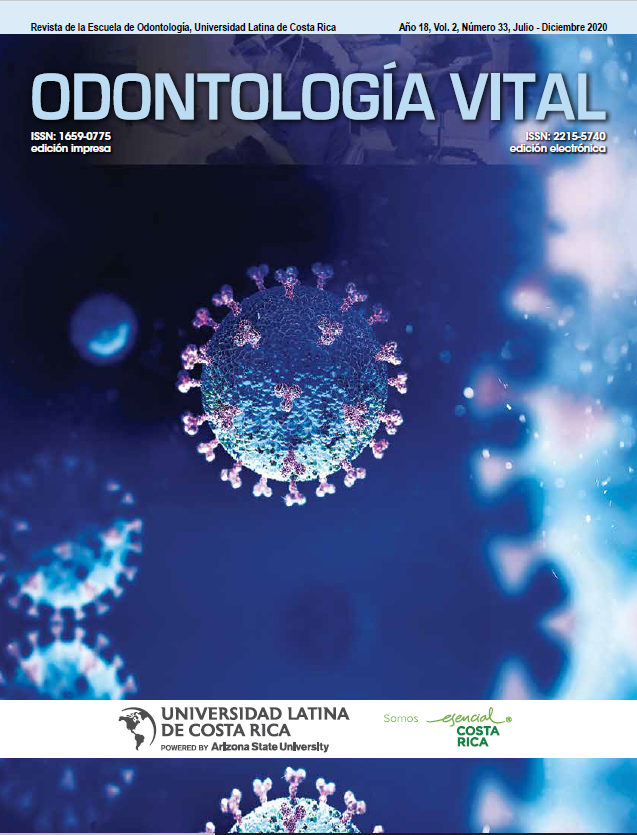Dentinogenesis imperfecta type II: Case report of two patients from the same family group
DOI:
https://doi.org/10.59334/ROV.v2i33.397Keywords:
Dentinogenesisimperfecta, Opalescent dentine, Ethiology, Dentine, Genetics, Tooth Abnormalities, Congenital AbnormalitiesAbstract
Introduction: Dentinogenesis imperfecta (DI) has been defined as a hereditary alteration of autosomal dominant
character, which originates during the stage of histodifferentiation in dental development, is a type of dysplasia of
dentinal tissue that affects the dentine structure of one or both dentitions.
The complications of ID have a strong impact on the quality of life of patients since the functional, aesthetic
and phonetic part are usually affected and represent an important challenge for the trafficker. Early diagnosis
and adequate treatment are necessary to achieve better functional and aesthetic results, minimize nutritional
deficiencies and psychosocial disorders, thus improving the quality of life of the person. Objective: To determine
the type of dentinogenesis, the family relationship, and the clinical characteristics of each patient. Methods:
Two brothers coming from the city of Cuenca-Ecuador, ages 5 and 6 years old, come to the Odontology clinic of
the Catholic University of Cuenca, respectively, for presenting multiple carious lesions. Generalized destruction of the coronary remnant and premature loss of teeth. After performing the clinical and radiographic diagnosis,
family history, the diagnosis of dentinogenesis imperfecta type II was established. Conclusion: the timely and
early diagnosis of dentinogenesisimperfecta is of great importance for an adequate treatment, because the ID,
affected mainly by the primary dentition, is fundamental visits to the dentist, since this will be able to diagnose the
pathology at an early stage. Avoid big damages.
Downloads
Published
How to Cite
Issue
Section
License
Copyright (c) 2020 Odontología Vital

This work is licensed under a Creative Commons Attribution 4.0 International License.
Authors who publish with Odontología Vital agree to the following terms:
- Authors retain the copyright and grant Universidad Latina de Costa Rica the right of first publication, with the work simultaneously licensed under a Creative Commons Attribution 4.0 International license (CC BY 4.0) that allows others to share the work with an acknowledgement of the work's authorship and initial publication in this journal.
- Authors are able to enter into separate, additional contractual arrangements for the non-exclusive distribution of the Odontología Vital's published version of the work (e.g., post it to an institutional repository or publish it in a book), with an acknowledgement of its initial publication.
- Authors are permitted and encouraged to post their work online (e.g., in institutional repositories or on their website) prior to and during the submission process, as it can lead to productive exchanges, as well as earlier and greater citation of published work.
Métricas alternativas











